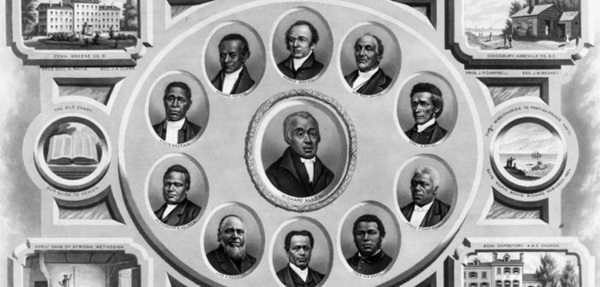Black History Month is an opportune time to discover or rediscover aspects of U.S. history often ignored or obscured by “official” educational systems, legalized policies and practices, and even ecclesial narratives. By focusing on the testimonies, accounts, and realities of Black Americans, we open ourselves to a more accurate account of how the United States was formed, survived, and thrived despite our sinful reliance upon legally and culturally enforced slave labor of those born in and of Africa. Black History Month gives all of us the chance to interrogate the narratives taught by our schools, our legal systems, and, yes, even our churches. By doing so, we get a better sense of who we are, who we desire to be, and what we’re willing to lay down and pick up for our desire to become reality.
Small Group Exercise: (You may find the preparatory work is done during Black History Month and the class in March; however, you can also engage this learning exercise any time during the year).
2 weeks before your group meeting, include the above paragraph and the reading selections below to participants. Ask them to do two things:
- WEEK ONE: Write down what they already know about the origins of the A.M.E. Church. If they don’t have any prior knowledge, ask them to ask a United Methodist in their family, church, or UM seminary about the origins of the A.M.E. church and keep enough notes to be able to remember them for group discussion in two weeks;
- WEEK TWO: (week before group meeting): Divide the group into three sub-groups and ask each group to read one of the three selections listed below. Ask them to take enough notes to be able to discuss what they read in class next week.
- READ pages 3-9 of the first A.M.E. Discipline; and the “Our History” statement on the A.M.E. website.
- READ pages 13-21, The Life Experience and Gospel Labors of The Rt. Rev. Richard Allen.
- READ pages 63-70, Freedom’s Prophet: Bishop Richard Allen, the A.M.E. Church, and the Black Founding Fathers, Richard S. Newman, 2008.
During Class Time:
- 5 MINUTES: Welcome, Overview of what’s been done so far, and Prayer for “Ears to Hear and Eyes to See” what God is offering during this time of learning and sharing.
- 10 MINUTES: Have large group share what they knew of the origins of the A.M.E. Church before they read their selection. (This could be either what they knew or what they discovered by asking a fellow United Methodist – but before they read the selections.) The facilitator should write down notes on wall-size post it paper.
- 20 MINUTES: Have each sub-group share with the large group what they learned from their reading selection (1st A.M.E. Discipline, The Life Experience and Gospel Labors of the Rt. Rev. Richard Allen, or Freedom’s Prophet by Richard Newman). Ask someone from one of the other groups to write notes on wall-size post it paper with the heading of the reading selection.
- 10 MINUTES: Place all 4 wall-size post it paper on the wall next to each other. Discuss the similarities and differences between them. Reflect on what this means for The United Methodist Church to be engaged with anti-racism work right now.
- 12 MINUTES: Decide upon one action your church can do to share this information with the whole church, church/community, or connection. Examples include but are not limited to:
- Create a similar class for a larger group;
- Do a multi-week study reading Freedom’s Prophet in full.
- Find out what the United Methodist Discipline says about the origins of the A.M.E. Church. Compare this with information from the 3 selections. Decide what action, if any, is needed to rectify any misinterpretations of history.
- Include a copy of The Life Experience and Gospel Labors of the Rt. Rev. Richard Allen in your materials for every new member of your church (or Annual Conferences could do this for every cabinet member).
- Celebrate A.M.E. Founder’s Day (Feb 14th) by writing a letter of appreciation for the work of Bishop Allen and the original Black Methodists who attended the 1st A.M.E. General Conference.
- Visit Mother Bethel A.M.E. Church in Philadelphia, PA for a tour of the church and museum.
- Choose one Sunday to attend an A.M.E. service in your community (call ahead and let them know you are coming so they can welcome you during their service)
- Something else: _________________________________________________________
- 3 MINUTES:
- Create a date of implementation and one or two people who will be responsible for organizing its implementation.
- Close with prayer thanking God for the survival of historic documents, the ability to question the history given to us, and God’s faithfulness to bring truth to light.
Whose History? was originally published by the General Commission on Religion and Race. Reprinted with permission.

